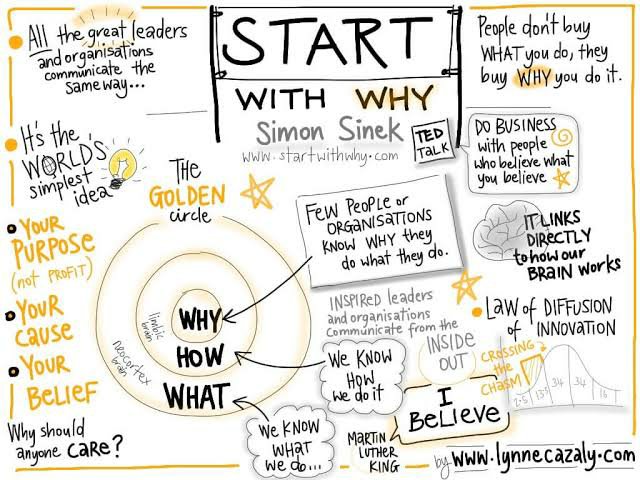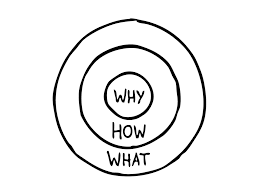“Those who have a ‘why’ to live, can bear with almost any ‘how’.”
– VIKTOR E. FRANKL

In “Start With Why,” the author, Simon Sinek presents that purpose-driven individuals and organisations succeed because they start with the “why” instead of the “what” or the “how.”
1. WHY is the purpose, cause, or belief.
2. Every inspiring leader starts with WHY
3. People don’t buy WHAT you do, they buy WHY you do it.
4. Knowing your WHY is the key to lasting success.
Sinek provides a framework for finding your “Why” and communicating it to your team and customers. It is by putting into practice your personal values and beliefs, and using them as the foundation for your business strategy.
To support his theory, Sinek provides real-world examples of companies that have successfully communicated their purpose to create a loyal following.
The Golden Circle
Sinek introduces and narrates a novel concept. He calls it, “The Golden Circle”.

The Golden Circle is formed of three parts: ‘Why,’ ‘How’ and ‘What.’
What ?
The What of a company relates to the product or service that a company provides. The What is the outer layer of the circle.
How ?
The How of a company is the approach adopted by a company. The How is the differentiating value proposition or a unique selling point of the company.
Why ?
The Biological Basis of Golden Circle
Sinek explains that the ‘What ?’ is directly related to our neocortex in the brain. The neocortex is a an area in the human brain specialized for rational and analytical thoughts and language. The neocortex does not drive behavior. Instead, it only allows us to consider vast amounts of data.
The ‘How ?’ and ‘Why ?’ of The Golden Circle are both associated with the limbic brain, which is specialized for feelings like trust and loyalty. This area of the brain is responsible for all human behavior and decision-making.
Thus if you start with ‘Why ?’ you will be directly connecting with the limbic brain and this will facilitate better decision making.
“The role of a leader is not to come up with all the great ideas. The role of a leader is to create an environment in which great ideas can happen.”
Video
Watch Simon Sinek, explaining ‘Start with Why’